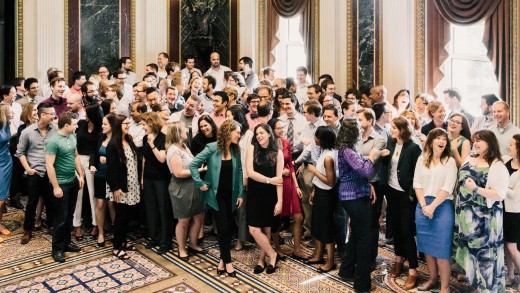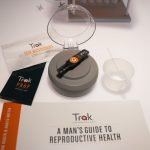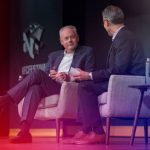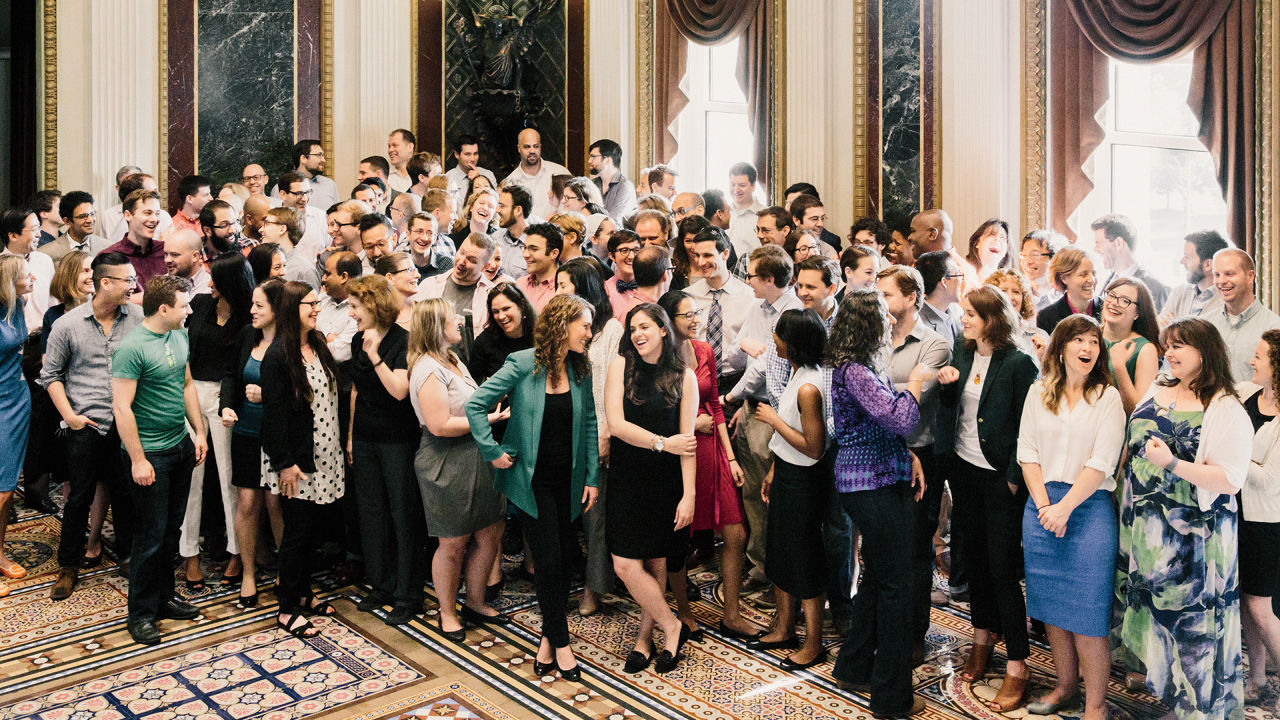inside Obama’s Stealth Startup
President Obama has quietly recruited top tech ability from the likes of Google and facebook. Their mission: to reboot how govt works.
June 15, 2015
For Eric Maland, the whole thing goes again to that San Francisco wedding. Mikey wasn’t there—neatly, wait, in truth, Mikey was once there. however Eric didn’t meet him at that time. Eric met another folks on the wedding ceremony who advised him they had been doing a little restore-it stuff in Washington, and it sounded roughly interesting.
And now we’re chatting about it in front of the White home safety gate, the place we’re waiting to speak with the leaders inside about why guys like Eric at the moment are wandering round this neighborhood with MacBooks in their shoulder bags and code of their heads. These are the “new techies,” as longtime Washingtonians tend to say, but that’s reasonably imprecise. These are people whose pedigree in Silicon Valley provides them the whispered reputations of gods and goddesses. I have a look at Eric. He’s sporting a light T-shirt; his sparse hair is significantly disheveled down. Did he sleep today? train? Shave? All arguable. “Ever surprise what you’re doing right here?” I ask him. He was the 13th engineer employed at Amazon, the first operations director at Twitter. Like everybody else on the stealth workforce that President Barack Obama is amassing and deploying throughout the executive, he by no means imagined he would reside and work in D.C. “i assume I just like to fix things which are broken,” he says, shrugging.
Then there’s Lisa Gelobter. “Oh, you’ve gotta hear my story,” she says. It’s later that day, and we’re strolling near the Washington Monument below a searing midday sun. There was this call she acquired abruptly last summer time in the big apple, inviting her to a couple roughly roundtable dialogue in Washington for tech leaders. Lisa had simply frolicked on the upper management groups at Hulu and guess. She decides, reluctantly, that she’ll go take the meeting, which includes this guy named Mikey as well as this other guy named Todd, and seems to be within the Roosevelt Room in the West Wing. Then President Obama opens the door and surprises everybody, and over the course of 45 minutes provides the sales pitch to beat all sales pitches. They want to come work for him. they’re going to want to take a pay minimize, the president publicizes. however he doesn’t care what it takes—he will in my opinion call their bosses, their spouses, their youngsters to persuade them. the crowd laughs. however he gravely responds: i’m totally serious. He desires them to overhaul the government’s digital infrastructure now. “What are you going to claim to that?” asks Lisa.

Oh, and the tales about Weaver. “First identify is Matthew,” Weaver says, sitting on a cheap sofa in a makeshift place of business near the White house. but nobody calls him Matthew, he explains, considering there are too many Matthews in any given room at any given moment. Even among D.C.’s new technorati, folks view Weaver as anyone separate from the fray. maybe it’s as a result of he once lived in a camper in the Google parking lot without going home for an entire year. perhaps it’s as a result of he used to be the one guy who, if he didn’t solution an emergency name, the entire search engine may go down. Or perhaps it’s as a result of in a gaggle of sensible engineers, Weaver, as certainly one of his new colleagues puts it, stands out as “any individual who is, like, superhero-fucking-sensible.” Recruited from California closing year by way of these guys Mikey and Todd to work on the broken Healthcare.gov web site, Weaver decided this year to stay in D.C. and go away in the back of the remedy of Google and an important pile of stock choices. He recollects it in terms that counsel the transfixing power of a holy pilgrimage. “That”—he says, that means the Healthcare.gov restoration-it work—”changed my existence in a profound way. It made it really feel like several my accomplishments in my skilled lifestyles meant little or no compared to getting millions of individuals in the course of the clinic doors for the primary time. And that made me see that I may never do any other work with no public impact.” Weaver now spends his days within the guts of the Veterans Administration, serving to the agency’s digital staff upgrade their methods and website online—and trying to reboot the way in which govt works. As an early take a look at to see if he could problem the VA’s protocol, he insisted, successfully, that his legit govt title be Rogue chief. And so he’s: Rogue leader Weaver.
Todd and Mikey—those who helped bring folks like Eric Maland, Lisa Gelobter, and Weaver down here—are, respectively, <a class="fc-plugin people-page" href="http://www.fastcompany.com/person/todd-park" data-name="peoplePages" data-id="fastcompanythe former chief technology officer of the united states, and Mikey Dickerson, who led a workforce of 60 engineers at Google and supervised the crew that mounted the Healthcare.gov website ultimate yr. because that time, Park and Dickerson have been steadily recruiting an elite digital corps—a startup group, essentially, built mainly from the ranks of high non-public-sector companies—and embedding them inside the U.S. executive. Their objective is to remake the digital systems in which govt operates, to put into effect the roughly effectivity and agility and effectiveness that outline Silicon Valley’s biggest successes, across the whole thing from the IRS to Immigration products and services. “We’ve acquired about 140 people in the community right now,” Park says of the digital group. “The goal is to get it to about 500 via the tip of 2016.” whether or not Park and Dickerson can in finding sufficient superstar techies to take a flyer on this dangerous undertaking is only one of many considerations. There are larger questions, too, akin to whether or not a small collection of technologists can in reality result in huge modifications inside essentially the most huge, highly effective, bureaucratic regime on earth.
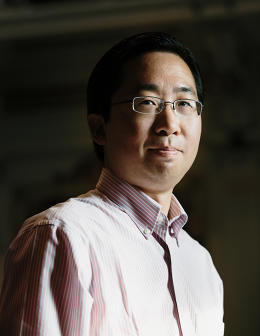
It helps that the two males have substantial “air duvet,” as President Obama describes it in an unique, in-person interview with fast firm. For the previous yr, the president explains, he has individually helped Park and his group rent skill and put in force their ideas throughout a number of presidency companies. while the explanations behind this initiative and its scope have no longer been made clear sooner than, in the president’s view, the idea of establishing a “pipeline” of tech talent in Washington starts with practical appeal: higher digital instruments could upgrade the web sites of, say, the Veterans Administration, so users get a very powerful services that save time, money, and (for veterans in need of medical help) lives. “but what we realized was, this is usually a recipe for something higher,” the president explains. “you are going to have a more person-friendly executive, a more responsive govt. A govt that can work with individuals on particular person problems in a extra tailored method, because the expertise facilitates that the identical manner it an increasing number of does for personal-sector firms.” In other words, if Obama’s tech workforce can efficiently rebuild the digital infrastructure of Washington—an outcome that is in no way sure yet—you might no longer handiest trade its performance. you might become americans’ attitudes about govt too. And you may even improve their waning feelings of empowerment in an ideologically riven united states of america of 320 million folks.
within the meantime, do you also prove with a dedicated crew of Rogue chief Weavers the place none existed before? Tech geniuses who embody public carrier as an very important element of their careers? The president is having a bet on that result as smartly. Get the usa’s technologists to vary Washington, the theory goes, and possibly—simply possibly—you end up changing the u . s . a .’s tradition of technology, too.
the new hub of Washington’s tech insurgency is something often called the U.S. Digital provider, which is headquartered in a stately brick townhouse 1/2 a block from the White house. USDS workers tend to congregate with their laptops at an extended desk on the back 1/2 of the parlor flooring. If there’s no room, they retreat downstairs to a low-ceilinged basement, sprawling on cushioned chairs. apart from an air-hockey desk, there aren’t many bodily reminders of West Coast startup tradition—quite a lot of the new techies are issued BlackBerrys, which appears to lead to them near-bodily ache. nonetheless, the corps at USDS tends to depend on the identical jargon you hear round Silicon Valley nowadays. They’ll say they’re here to “iterate,” or to “ship product,” or to “JFDI” (that’s, simply fucking do it). after I wander downstairs one morning in late April, Ben Maurer, a younger engineer on sabbatical from facebook, is huddling with just a few colleagues on a mission for the division of safeguard. “I’m not simply fixing bugs right here,” he informs me, having a look up from his laptop for about a nanosecond prior to going again to his coding. He seems drained however pleased to work on one thing big—in this case, to map out a vast digital structure for an upcoming project at the sizeable agency.
To a certain extent, the Obama administration has all the time been a at ease situation for techies like Maurer; the president—whose 2008 campaign was arguably the most convincing demonstration at the time of social media potential—used to be the primary chief executive to nominate a chief expertise officer and, extra recently, a first-rate information officer. “government has executed technology and IT terribly over the past 30 years and fallen very a lot at the back of the non-public sector,” Obama says. “And when I got here into govt, what surprised me most was once that gap.” however growing excessive-level positions like the CTO was a route to better govt expertise policy, now not necessarily higher operations. along with, the quick precedence was once addressing the industrial obstacle and resolving defense force entanglements.
Tech moved up on the punch listing in 2013 as a result of a brand new trouble: the Healthcare.gov fiasco. When the president’s key legislative fulfillment used to be mortally threatened by using a nonfunctioning website online, Todd Park, as CTO, used to be among those requested to assist rescue the exercise. before his stint in government, Park had began two clinical IT firms now valued at over one thousand million greenbacks every, and it used to be that experience, no longer policy or politics, that he known as upon. Park recruited Dickerson from Google, as well as a half-dozen different engineers. This small group, working across the clock in Maryland, fixed the web page in seven tense weeks. now not most effective did the hassle “save the president’s baby,” as one former White house staffer places it, it crystallized within the administration the affect that just a handful of deeply gifted techies will have on our government’s performance. And it prompted Obama, Park, and their colleagues to wonder: may an infusion of West Coast tech skill grow to be permanent? What would possibly that reach?
because it became out, there used to be a adaptation to follow. The British executive had validated that the most effective digital practices from the personal sector could be utilized to the public realm with transformative outcomes, via an initiative known as the federal government Digital provider. (A columnist at the Guardian newspaper lamented that he couldn’t spend money on the GDS, even though it looked like one of the best tech startup in Europe.) Park, in the meantime, had already put some pieces in place: a application known as the Presidential Innovation Fellows, begun in 2012, which brought vivid younger technologists into govt for 12-month stints; and a bunch known as 18F, within the govt’s common services Administration, that deployed graduates of the fellows application to different govt companies on a venture basis.
With the backing of the president, Park scaled up his recruiting efforts. His outward-going through policy job turned into occupied with constructing an interior tech team. Dickerson had lower back to the West Coast after Healthcare.gov—his intention was to sleep as a lot as that you can think of for several weeks straight. but in may 2014, he got here again to Washington for a meeting with Park, who harangued him late into the night at the Shake Shack in DuPont Circle, the popular hangout of the West Coast techies. Park wished Dickerson to pick up where he left off at Healthcare.gov and lead a new and more formidable mission. the two were gently kicked out of the restaurant through a supervisor locking up for the night time. but with the aid of that point, Dickerson had made up our minds to decide to running a new imperative expertise bureau. The USDS opened for industry just a few months later.

One morning in late April I sat down at USDS headquarters for a number of hours with Park, Dickerson, and Haley Van Dyck, who, with Dickerson, helps run the USDS. If the president is successfully the CEO of the White home’s tech startup, Park can be its chief strategist. he is excitable and charming, with a cyclonic energy that helps provide an explanation for why he’s been so successful as a skill recruiter. When he talks about two concepts, or two individuals, that he very so much likes, he blurts out, “this can be a whole double-helix of awesomeness!” In describing the level of issue the new tech group in D.C. faces, he exhorts, “that is DARPA meets the Peace Corps meets SEAL staff Six!” (“Todd is probably the most enthusiastic individual i do know,” says Obama.) Dickerson, in contrast, does not emote. in reality, Dickerson comes off to start with look as grumpy and rumpled—any person who, in a no longer-too-far-off era, may have made a terrific clerk in a video-condo retailer. then you definately talk with him and are looking to take your first affect back. Dickerson is an uncommonly skilled engineer with a deadpan wit and an unflappable nature. when I ask how he feels about the tech surge scaling up, he says, “Yeah, I’m losing all that free time I had.” His business card incorporates no title but reads, Don’t panic. Park calls him Buddha.

Outsiders steadily make the mistake of perceiving Washington’s technical issues as the result of a dearth of engineering talent. This makes it tempting to frame the current wave of hires from Google and elsewhere as a wartime tactical team moving in to save us from the town’s current coding barbarians. however this isn’t fairly proper. For one factor, the folks Park and Dickerson are luring here aren’t just tool engineers; they’re information scientists, consumer-expertise specialists, product managers, and design savants. For another, these persons are being matched with executive insiders who can advocate them on learn how to deploy private-sector tools like Amazon internet services and products, for example, which have long been regarded as forbidden within the Beltway, or how the procurement of contractors may also be enhanced. on a regular basis this involves slicing a jungle path through hundreds of pages of overgrown executive rules. As Park says, “we’d like both varieties: individuals who can hack the technology, in addition to people who can hack the forms.”
The complexity is ambitious. if you put your engineer’s hat on, Dickerson says, which you can take a look at executive’s approach to tech and decide that it’s just about insane. but when you believe it as an anthropologist would possibly (“in the event you’re learning this alien tradition,” he says, “and also you ask, Why do they behave so unusually?”), you see that D.C. has developed its dysfunctions for deep, structural causes. as an example, Washington has lots of smart individuals, Dickerson says. but they’ve been faraway from the out of the ordinary growth—simplest taking place during the prior decade, in reality—of the handful of West Coast corporations that may now manage “planet-scale web sites,” as Dickerson places it.
notably, there is the inertia of the previous. one of the most first lessons Dickerson learned about D.C. when he arrived was that town historically conflates the importance of a role with its value. Healthcare.gov in some way was an $800 million undertaking, with 55 contracting companies involved. “and of course it didn’t work,” he says. “They set aside a whole bunch of millions of greenbacks to construct a web page because it was an incredible, essential website. but compare that to Twitter, which took three rounds of funding ahead of it obtained to about the same number of customers as Healthcare.gov—eight million to 10 million users. In those three rounds of funding, the entire thing added as much as about $60 million.” Dickerson believes that the Healthcare.gov undertaking will have been completed with a similar dimension funds. however there wasn’t someone to insist that the now-neatly-centered Silicon Valley apply of building “agile” software—rolling out a digital product in degrees; trying out it; making improvements to it; and repeating the method for continuous growth—would be vastly sophisticated to (and much, much cheaper than) a patchwork of contractors building out a whole and monolithic site. In his quick firm interview, President Obama remarks that he made a big mistake in thinking that government could use traditional the way to build something—Healthcare.gov—that had never been built before. “whilst you’re coping with IT and instrument and program design,” the president explains, “it’s a creative process that can’t be handled the same approach as a bulk buy of pencils.”
which is not to assert that replacing Washington’s tradition with that of Silicon Valley should be the purpose. Some hybrid of tech people who can innovate with endurance fairly than aggression may be more effective. Dickerson notes that govt tech contractors, even essentially the most skillful ones, face the exhausting challenge of seeking to repair an getting older digital device without compromising any very important services and products. the tactic for issuing Social safety checks, for example, depends upon previous mainframe servers operating on the demise COBOL laptop language. “That’s fine, and it’s lasted them a long time,” Dickerson says. but the individuals who can maintain and operate that generation of technology are not going to reside eternally; certainly, a lot of them are past retirement age already. in this case, the West Coast mentality might be counterproductive. “There’s an perspective within the entrepreneurial non-public sector the place we don’t care what got here earlier than us: We’re going to disrupt it,” Dickerson explains. “however we aren’t going to disrupt Social security. That’s an incredible it’s because it’s so laborious to make these changes, as a result of which you could’t interrupt the drift of operations.”
Dickerson provides, “it’ll now not work, and you’ll now not go a long way, for those who come here with a massive attitude, pronouncing, ‘You persons are silly, get out of the best way and we’ll exhibit you how it’s done.’ ”
Are there in reality individuals like that within the Valley? I ask.
Dickerson laughs. The individuals he’s directing, he says, are usually the more humble sorts. And the parents fascinated with curated meals and massive equity programs and uncompromising disruption didn’t come east to lend a hand him. this is not the position for them anyway, he says. they just wouldn’t get it.
We’re no longer selecting a lot of these individuals after we recruit, Van Dyck, the USDS deputy, provides. “they usually’re now not selecting us, either.”
The White home chief of workforce, Denis McDonough, enjoys strolling conferences, so one morning he courses me during the corridors of the West Wing and out onto the South lawn, the place we spend 25 minutes doing brisk laps around a round driveway flanked by means of inexperienced grass and blooming gardens. McDonough factors out the Rose garden and relates a couple of historic tidbits concerning the White house grounds. but principally we speak in regards to the greater goals of the tech insurgency. As he sees it, the online and expertise instruments “flatten the whole lot” through permitting american citizens to have interaction with govt extra immediately. So the conception that higher tech will yield higher democratic engagement is to each him and the president an aspirational—and logical—pursuit. however McDonough additionally believes there will likely be different immediate advantages. The transparency that expertise permits (consider, as an example, how health insurance plans can now be easily when put next on-line) will not simplest yield tremendous efficiencies. it could possibly enable american citizens to have better regulate over their own decisions—to interact with executive in the same glitch-free method we do with iTunes or Amazon. “Why will have to we be immune?” he says. “the whole thing else is getting performed faster. Why should this establishment be completely different?” McDonough tells me that he admires how the tech insurgents have delivered to D.C. their abilities and collaborative habits, in addition to what he calls a “hunger” for growing efficiency. He stops walking and turns to me to say, “they’re in an industry that has repeatedly reinvented itself and grow to be extra efficient. And that’s as a result of on the heart of that trade is the realization that you simply’re going to get twice as good every two years, and that’s held for 50 years.”
there is no Moore’s regulation for govt—at least now not yet. And every other factor that McDonough, Park, and Dickerson should confront is that this government startup won’t ever have the same lean, targeted center of attention of a personal-sector company. certainly, the tech insurgency just isn’t even being constructed multi function place. Dickerson’s USDS currently employs 37 people, but it’s only one facet of an endeavor that has grown organically and sprawls far and wide Washington. It doesn’t also have a proper name. Park tends to explain the new tech corps as a “three-layer cake.” USDS is the primary layer—a group of technologists who strategize about what projects will have to become executive priorities and which people should work on them. The 2nd layer is 18F—a group of ninety technologists and designers who work within the normal products and services Administration just a few blocks away. 18F takes its name from its deal with (the GSA constructing is at 18th and F Streets) and has casual ties to USDS, but it’s basically a carrier company. The workforce can tackle jobs from any place within govt that’s short of digital lend a hand. not like USDS, it doesn’t necessarily follow the president’s political priorities.
And the 0.33 layer? That would be the tech groups, ranging in size from five individuals to 50, as a way to be installed within 25 executive businesses over the direction of the next 18 months. These teams will seek the advice of incessantly with USDS for steerage and could utilize 18F for its services. the first wave is being led by using individuals like Lisa Gelobter, who was given the hard sell with the aid of the president in the Roosevelt Room and who now works in the department of training. Matthew Weaver, previously of Google, leads every other staff on the Veterans Administration.
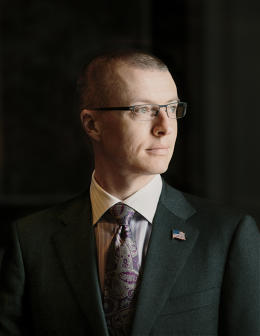
The “tech cake” is most effective a metaphor, in fact. And while touring the totally different layers of the cake over the route of per week, i began to wonder if it’s the incorrect one. What the designers of this effort in fact need to create is one thing extra dynamic—in effect, a know-how ecosystem that long outlasts their stints in government. In that regard, it’s possible you’ll believe Washington’s tech panorama, as it currently exists, as a roughly brown and barren container. And on that container, believe each company as having a fenced-in plot of land. The USDS works now as landscape architects—those who design what kind of timber and plantings will go in every plot, and who will do the work. The individuals at 18F function like a nursery and contractors—they’ll present the healthiest trees and do the plantings, both on their own or by the use of any individual they belief. They’ll even train you find out how to be a excellent gardener. in the meantime, the tech groups at businesses like training and Veterans will take what USDS and 18F advocate to make their plot flourish.
The overarching purpose right here is to get the whole thing to develop collectively—very tall, very fast, inevitably joining up into a wooded area cover with the intention to create a functional and interconnected device.
“If we’re seeking to construct new services that serve the general public just right, then the mechanism in which we do that’s by mixed products and services talking to each and getting you what you wish to have,” says DJ Patil, every other Silicon Valley recruit of Park’s, who works intently with USDS and serves as U.S. chief knowledge officer. Plus, he provides, “If we combine techniques, what kind of cool, superb issues will we find? What occurs after we convey collectively climate data with health information—do we understand how the altering atmosphere is impacting our well being?”

If it’s nonetheless too early to say whether this expertise ecosystem will flourish, it’s nevertheless true that the tech surge has moved past its conceptual ranges. more than a few teams are actually engaged in rolling out tasks. sooner or later in Washington I spend the afternoon at 18F, a large, bright, open area, the place groups of two or three work at white tables. The staff has 15 shriveled tasks below method. “Our two main areas are delivery and consulting,” says Hillary Hartley, who leads 18F. delivery, she explains, “is where we would build the object for an agency—the site, the service, the web transaction, whatever.” That’s what lots of the groups in front of us are up to. “Consulting is the place we’re helping the consumer do one of the most design considering, or problem scoping,” so they may be able to figure out what to purchase from a seller.

We sit down with a group seeking to revamp the Peace Corps web page, then we stroll over to talk with any other workforce that just lately created a consumer-pleasant analytics web web page, analytics.united states of america.gov, that tracks which govt web pages are trending (a national climate provider page usually tops the record). The purpose right here is to expose how U.S. electorate use govt web pages, and to spark wholesome competition among agencies to create extra well-liked products and services. in keeping with the tech corps’ guiding ideas, everything is open supply, so outsiders are free to adapt the program. and so they do: just a few weeks after the analytics site went live, Philadelphia used this system for its own analytics website online, which the 18F crew thought to be a measure of success. thanks to their open-supply code, that they had more desirable executive without doing any further work.
We discuss with any other staff at a nearby table. At this level, one of the important work at 18F, performed together with USDS, includes overhauling the Immigration services and products web site. 18F is helping to redesign the web page to significantly support the consumer expertise—as an example, by using simplifying searches to assist those whose facility with English could also be restricted. in the meantime, USDS is laboring deep below the skin. some of the preliminary targets is to rebuild the know-how for a form referred to as the I-ninety. It’s how prison immigrants whose inexperienced playing cards are misplaced or stolen apply for a replacement, and the present process—paper-based and gradual—can take as long as eight months. In making a digital tracking kind and a better on-line utility, the designers think they may be able to cut back the time to a fraction of that.
And that’s only one bureaucratic growth at one agency. There are dozens of other kinds on the Immigration services website online alone, which pointers at the scale for improvement. “it is a $seventy five billion know-how market,” Andrew McMahon, a cofounder of 18F together with Hartley, says of the annual executive IT finances. “So when you marvel, How a long way do we attain? smartly, i feel it’s roughly limitless.” Hartley, for her part, notes that 18F couldn’t in fact capture all of that IT work. “Our underlying goal is to make better clients, and to make the agencies take into account a new method of doing issues,” she says. “We’re by no means going to be sufficiently big to take on the $seventy five billion market. but we can be large enough to lend a hand people in the market make better decisions on how you can construct, or buy, their digital services.”
The paradox right here is that when the tech teams prevail with a undertaking like the I-90 form, or with any retooled govt website online, users doubtless gained’t assume a lot about it. it is going to be fast and intuitive. it is going to not crash while you use it. And you are going to then get on along with your lifestyles. once I ask Dickerson what USDS’s greatest win has been seeing that its start, he points to the open-enrollment season for Healthcare.gov, which went smoothly this 12 months as compared to last year’s debacle. “That’s an enormous accomplishment,” he says, “however we don’t have any protection of it as a result of there’s nothing to assert. The educate destroy didn’t happen. We’re proud of that.”
the most important problem with assessing tech startups is that most of them sound beautiful good originally. And although you recognize the chances moving into—that by using some estimates, 9 out of 10 will fail within a number of years—it doesn’t necessarily dim the shine of a new idea. with out query, a tech startup of 100-plus people, backed via the president and dealing deep inside executive, differs from a startup involving three guys in a Palo Alto crash pad cluttered with quick-food wrappers. As Park perceives the government mission: “this can be more like what some huge companies have carried out to mainly disrupt themselves.” nonetheless, for those who have been a VC looking to recreation out the percentages of success right here, you might go in the course of the possibility components facing the U.S. Digital service, 18F, and the tech teams now rising within more than a few agencies. As a risky and bold startup, how do they measure up?
First, there’s what we would possibly think of as “talent possibility”—as they scale, are these the precise folks for the correct job? Tech managers like Dickerson and Weaver already proved their mettle during the Healthcare.gov rescue, and the oldsters now being lured to D.C. with the aid of Park’s workforce are arguably among the many business’s very best. they’re screened no longer only for IQ, but for EQ (that is, emotional intelligence). So they appear to move that take a look at. And that implies we may subsequent imagine the dangers of the tech corps’ tools: Do they’ve the wherewithal and organizational construction to make this take root inside executive?
there are a number of reasons, some highly technical, to think the corps have an inexpensive likelihood. One must never underestimate the difficulty of getting Washington to maneuver ahead fast—or logically. What’s extra, budgets can always be prone to political fights in congress. however the architects of the USDS—particularly Park, Dickerson, and Van Dyck—made certain that their bureau was once ensconced throughout the administrative center of administration and funds, which supplies the techies muscle inside more than a few companies and a capability to influence various IT budgets and features of command. What’s extra, with the strong backing of the president and his chief of personnel, the USDS has sufficient of what Dickerson calls “arduous energy” to repair vital problems round town. slightly simply, the president can (and does) ask his cupboard secretaries to take critically any USDS overtures to work on projects within their agencies.
What about the market possibility? Will there be enough trade in D.C. for the tech teams? for those who’ve ever been on, say, the U.S. division of education’s website, it’s a question that solutions itself. Van Dyck tells me “there are now traces across the block” to faucet the USDS’s services and products. McDonough, the chief of workforce, says, “these guys”—the USDS—”went over to temporary the secretary of safety and he mentioned, ‘I’m offered. give me 10 teams.’ ” The techies’ market demand is further buttressed via an absence of competition. The USDS is helping companies find the perfect contractors, no longer competing with contractors or businesses. So, arguably, they go this take a look at too.
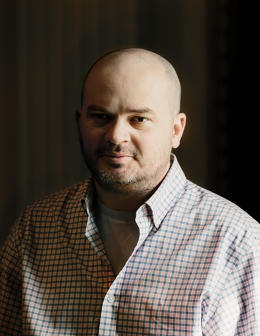
An unresolvable possibility however hangs over the whole exercise: the chance of working out of time. a lot of these working with USDS talk about getting to “break out pace,” because of this getting the velocity and momentum necessary, much like a rocket at liftoff, ahead of Obama’s 2nd time period ends. “we now have 630 more days,” Dickerson tells me in late April. “now we have booster rockets for those 630 days to get us into orbit. If [USDS] achieves a steady orbit in that point, then it is going to be here for a era, or possibly longer.” And what if the next U.S. president has a unique agenda? In plenty of conversations, I got here away with the impression that making improvements to government technology is less politically fraught, and not more partisan, than different Obama initiatives—but it nonetheless may well be the case that a future administration dismantles what Dickerson and Park are building, and even eliminates the place of job of chief know-how officer. “I don’t personally concern about it a ton,” Dickerson says with a shrug. “for the reason that issues we set out for ourselves just for the following two years—I imply, if we accomplish just these issues, it will be worth all the effort, even supposing all of it goes up in smoke simply after.”
The people at USDS and 18F don’t appear to doubt that they’ll have an impact. certainly, they imagine it is glaring already. by way of repeatedly testing their software with customers, they may be able to gauge enhancements in actual time. some of these upgrades may seem minor now, however they will have to, in time and in sum, add up to something important—and perhaps something very big. even though you by no means go onto the more desirable Veterans or Immigration internet sites, you may also quickly to find that, say, the Federal scholar mortgage pages (a approaching challenge of Dickerson’s) are stronger so that higher information and clearer navigation will increase participation and reduces defaults. And it doesn’t seem to topic, on this case or others, that USDS teams as small as five or 10 folks shall be working inside agencies which are a lot better than Google, Apple, and even normal Motors. as the Healthcare.gov rescue effort established—or, certainly, any a hit startup in Silicon Valley can prove—a very small collection of tech folks can have a disproportionate impact.
there’s any other aspect to the influence question as smartly: What in regards to the results on the recruits themselves? in relation to looking for meaningful work, the tech business may not be what it used to be; one working comic story on HBO’s Silicon Valley is that everyone has been ended in consider that they’re changing the arena with their app or algorithm, even when they clearly aren’t. meanwhile, at the true Silicon Valley firms which have actually changed international culture and business—Google, Apple, fb, Twitter—there may be a distinct dynamic. As these corporations develop ever larger, the contributions of person engineers could seem proportionately ever smaller. as a minimum up to now, these components have created a pool of prime-tier candidates open to taking over other sorts of work with depth and import. And the purpose for Obama is to not sell these candidates on a occupation in govt, however somewhat to enlist them in a stint of a 12 months or two at USDS, or even a few months. for many years, entire lawyers and economists have worked in the capital between personal-sector jobs, so why now not technologists? “What i feel this does,” says Megan Smith, the present U.S. chief expertise officer, who spent much of her profession at Google, “is in reality present a 3rd possibility. in addition to becoming a member of a chum’s startup or an important firm, there’s now Washington.”

this concept appeals very much to the president—actually, it was built into the USDS design from the beginning. “I’m having private conversations with other folks, assembly with them, or groups of them, and pitching them,” Obama says. “And my pitch is that the tech community is more inventive, extra innovative, extra collaborative and open to new concepts than any sector in the world. but now and again what’s lacking is goal. To what end are we doing this?” because the president explains, he asks potential recruits, “Is there a method for us to harness this implausible set of tools you’re growing for extra than simply cooler games or a sooner means for my teenage daughters to send photos to each other?” in the meanwhile, as a minimum, there seems to be. HBO might need to believe an on-place shoot.
[photos: Daniel Shea for fast firm, President Obama photographed in Washington, D.C., on April 30, 2015.]
quick company , read Full Story
(227)

